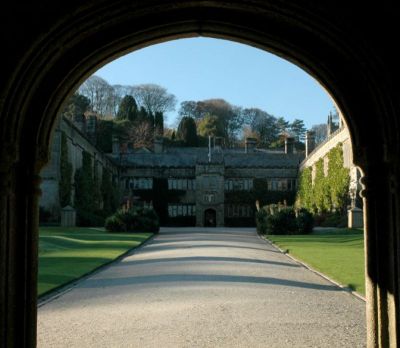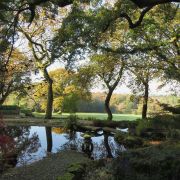
The great avenue of sycamores was originally planted in 1648, but few of the original trees remain today. These have been replaced mainly by a double row of beech trees, leading towards the old gatehouse. When Lanhydrock was in its heyday, there was a deer park south of this avenue, but this disappeared towards the end of the 18th century.
As with many gardens, the best time to visit Lanhydrock is when the azaleas are in bloom in the Higher Garden behind the main house. The scent and sight of the flowers is quite overwhelming. But there is something to see whenever one visits these lovely landscaped gardens. The fast-flowing Borlase stream runs from the hillside down towards the house underneath some lovely magnolias of many different varieties. There are a lot of bog plants around the stream. Higher up the hillside are the pretty native woodlands.
Near the edge of these woodlands is the thatched gardener's cottage, unoccupied for more than a century but providing a shelter for the wanderer caught in a sudden shower. It commands a great viewpoint above the valley towards Bodmin Moor. The River Fowey flows far below. Many points in the garden overlook the pretty church of St Hydrock.
The lower gardens are far more formal and there are several parterres of bedding plants, interspersed with Irish yews. Several bronze urns have been placed at various focal points in these gardens. The 17th century urns came from a French chateau and were designed by Louis Ballin, the goldsmith to Louis XIV. The formal areas are enclosed by castellated walls, built in the mid 19th century to complement the decoration on the old gatehouse.
Although the original house was built by John Robartes in the first part of the fifteenth century, little remains from that time. A severe fire in 1881 destroyed much of the property so most of the house is late Victorian. It is well worth a visit as it contains many interesting artefacts from that period. Lanhydrock was donated to the National Trust in 1953.







